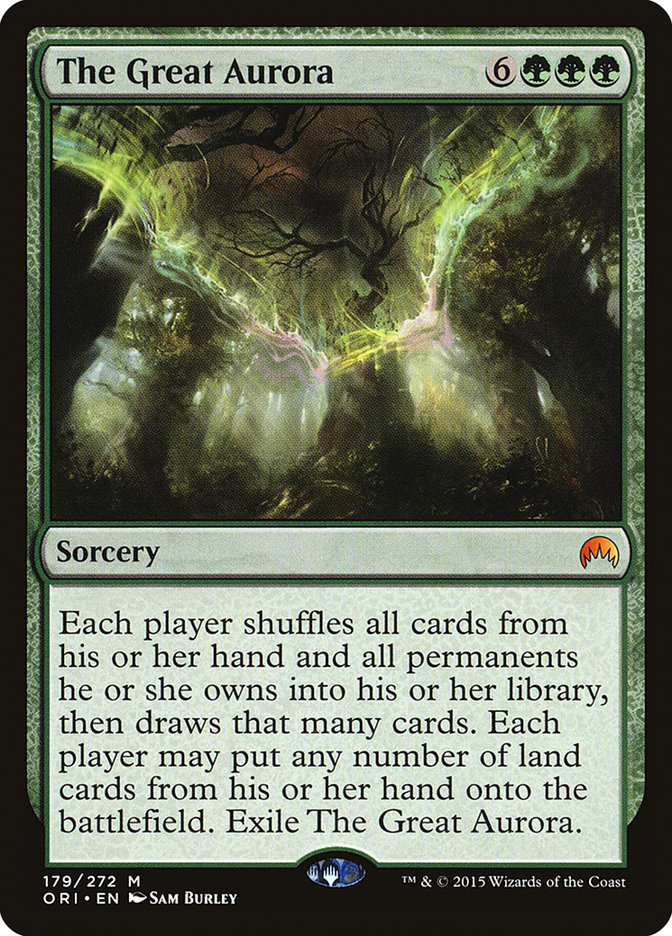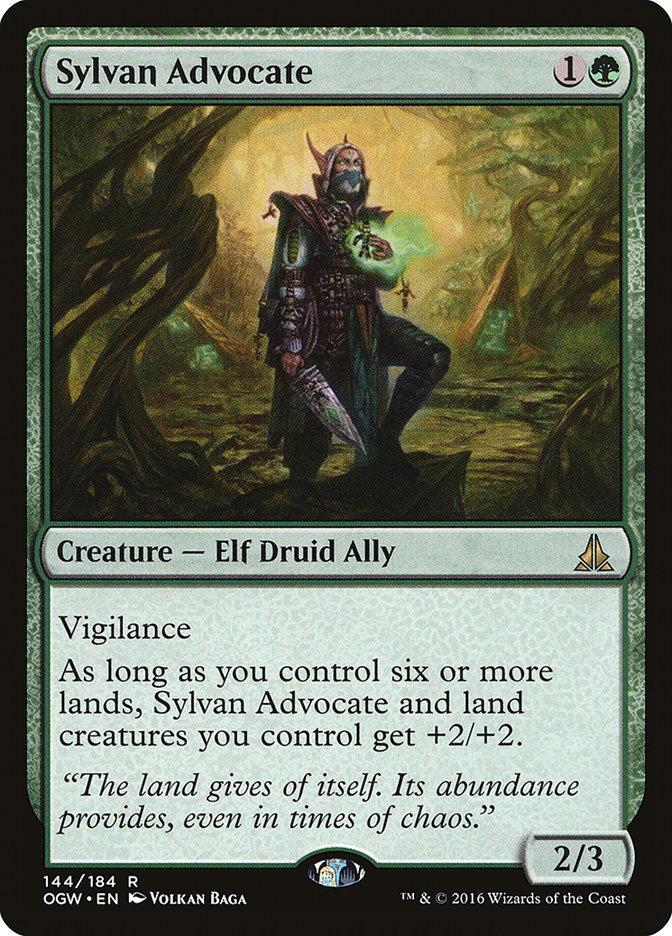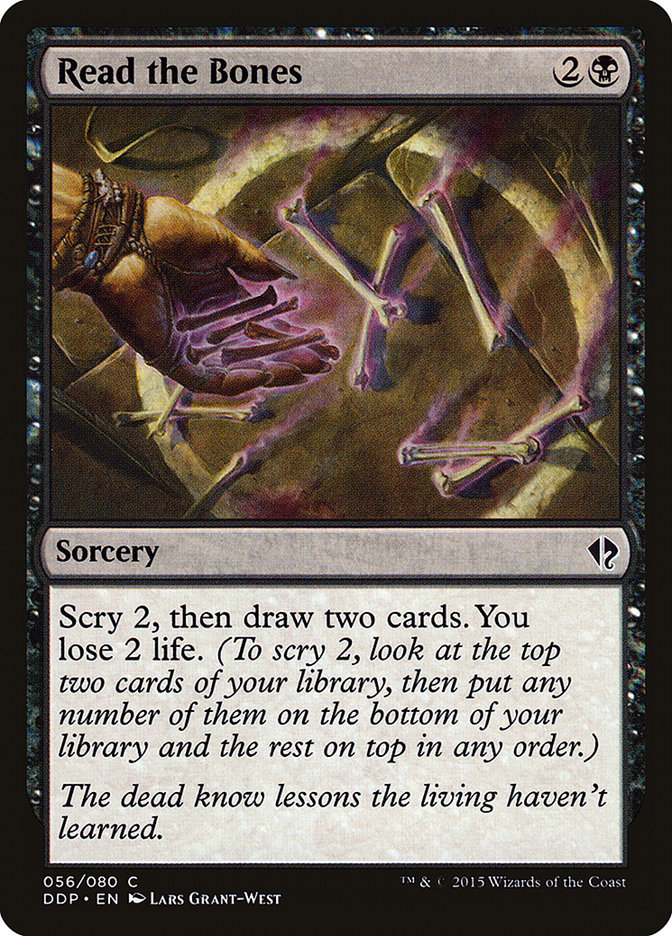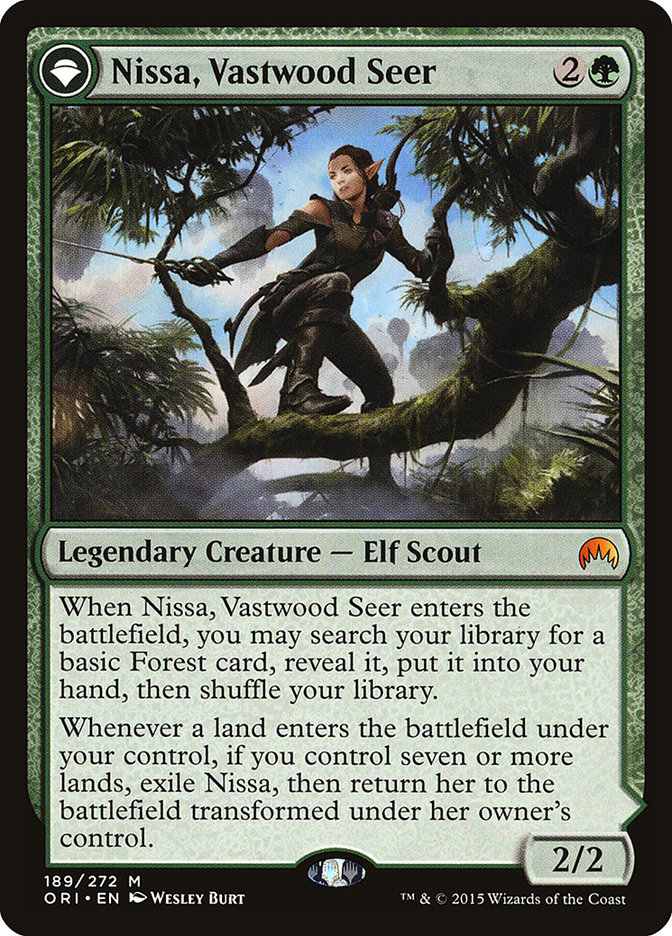This weekend I lost playing for Top 8 of #GPNY with a G/B control deck featuring The Great Aurora. I thought the deck was great, and I think I likely could have won the last round that I lost if I’d made any of a few decisions differently. Today I’m going to talk about how it came to be and why I played it.
Back when Shadows over Innistrad first came out, still weeks before the Pro Tour, an old-school Wisconsin Magic player I rarely get to see, Dustin Stern (I had no idea he had any interest in Standard), messaged me with a deck he’d been working on, wondering if I’d be interested in taking a look at it because he didn’t have much time to test. This is the first list he sent me:
Creatures (8)
Lands (24)
Spells (28)

I didn’t know what to make of this deck. Like, it looked like it worked, in that it could buy time and use ramp spells to get to the point where it could cast The Great Aurora with more cards than the opponent had, at which point it could keep doing the same thing, but even faster, and then do it again with an even bigger advantage, but then what? I didn’t really understand how it would actually win or what the endgame would look like.
So I told him it might need a better way to actually kill someone, and he said he liked one Seasons Past to make sure you can keep going, but he couldn’t find room, I think this is funny, because it would probably be the most important single card in the deck, but this is how things start.
Later on I sent him a first draft of a Seasons Past control deck I’d written up:
Creatures (8)
Planeswalkers (1)
Lands (24)
Spells (27)

He liked the idea of having a lot of bullets for tutors with Seasons Past, and a couple of days later he sent me his take:
Creatures (12)
- 1 Deathbringer Regent
- 1 Den Protector
- 1 Nissa, Vastwood Seer
- 1 Oblivion Sower
- 1 Ulamog, the Ceaseless Hunger
- 1 Kalitas, Traitor of Ghet
- 1 World Breaker
- 1 Sylvan Advocate
- 4 Deathcap Cultivator
Lands (26)
Spells (23)

This one was hard to process in a different way. While I didn’t know how the first deck would win, this just read like a sampling of random cards he wanted to try out. I can definitely get behind that method of deckbuilding, but it was still too raw for me to take over at the time with the Pro Tour coming up and other things I was working on.
Five days later he sent me another, very similar list with less ramp, four copies of Traverse the Ulvenwald, and a slightly different long list of singletons. I didn’t respond to either of these, so we stopped discussing it, and two weeks later he came back with a list he said he was 12-2 with on Magic Online, and it had numbers that made it look a bit more like a “real deck.”
Creatures (14)
- 1 Den Protector
- 2 Nissa, Vastwood Seer
- 2 Jaddi Offshoot
- 1 World Breaker
- 3 Sylvan Advocate
- 4 Tireless Tracker
- 1 Ulvenwald Hydra
Planeswalkers (1)
Lands (25)
Spells (20)

When I saw this list, my first reaction was that Tireless Tracker changes everything. Now we had a way to generate a real advantage for The Great Aurora, and I’d already been working on Tireless Tracker ramp decks at this point, so I knew how much I liked the card and how well it plays with Nissa’s Pilgrimage and Explosive Vegetation. So this was the final list I started tuning from to arrive at my final list for the Grand Prix:
Creatures (14)
- 1 Den Protector
- 1 Nissa, Vastwood Seer
- 1 Ulamog, the Ceaseless Hunger
- 1 Kalitas, Traitor of Ghet
- 1 World Breaker
- 4 Sylvan Advocate
- 4 Tireless Tracker
- 1 Ulvenwald Hydra
Planeswalkers (1)
Lands (26)
Spells (19)

The Great Aurora is sweet. When you just draw a bunch of ramp spells and no business, sometimes Seasons Past isn’t the right end-game because you don’t have any business to get back, and sometimes a single big threat just isn’t enough, even if it’s Ulamog, the Ceaseless Hunger. In those cases, The Great Aurora is perfect. When it resolves, you basically restart the game, except you both have four to eight lands and roughly a full hand, but no threats on the battlefield. That’s the exact state this deck is trying to get to, so you can usually win if you start the game there, and most of the time, it’s lopsided, because you start with several more cards than your opponent, at which point it’s extremely unlikely that they’ll beat you.
It’s nice to have multiple copies because, as the only card in your deck that exiles itself, you can only cast it once if you only play one copy, but I felt like the situations where you absolutely have to do it more than once are rare and it’s better to just have a diversified top-end to make your tutors better. Besides, because it doesn’t shuffle in graveyards, after casting The Great Aurora once, if you have a lot of mana and you’re looking for something to do with it, you’ll almost certainly be at the point where Seasons Past can find plenty of business, unless it’s been exiled by a Transgress the Mind, at which point you’ll just have to lean on your creatures. Fortunately, you have plenty of high-impact creatures to win the game with as well.
To me, this final list looks like a mashup of Tireless Tracker Ramp and The Pantheon’s Seasons Past control deck from the Pro Tour, but that doesn’t happen to be how it came about. However, it does provide some useful ways of thinking about the deck, which is how I realized I wanted to play it despite only having gotten around fifteen matches in with it.
I discovered in Duskwatch Ramp that I liked having creatures rather than removal spells to bridge the gap in ramp decks. They provide a backup win condition in case your opponent attacks your hand, and blocking neutralizes most threats about as well as a removal spell does. Honestly, Sylvan Advocate is basically Tarmogoyf in Standard (when Tarmogoyf was in Standard, there weren’t fetchlands, so it wasn’t huge at first, but would get huge later in the game; Sylvan Advocate in a deck with Explosive Vegetation plays very similarly).
I knew that I liked the Ramp deck, but over the last week, after Four-Color Rite broke out the previous weekend, I found that Duskwatch Ramp had too much trouble with the newly popular Eldrazi Displacer. I liked that this deck kept the core that I liked from the ramp deck, good green creatures that scale well into the late-game with ramp, and a diverse range of top-end threats, while adding the key ingredient that I was missing: cheap, reliable ways to interact with my opponent’s creatures.
What I learned from playing with it is that this deck also offers a lot of customizability in sideboarding because the creatures play well on both offense and defense, and the tutors give me more of whatever I need, so I have a lot of control over whether my black spells are fighting over creatures (removal) or spells (discard).
Essentially, this felt like it was just a better version of Ramp. I could go big quickly in a way that just let me go over most midrange decks, and with the assistance of my discard spells, I could go toe-to-toe with Ramp in the heads-up. Reliable access to Languish meant I was even better against aggressive decks.
At the same time, I felt like I was also just a better version of the Seasons Past deck. I had the same inevitable loop, but I didn’t need to spend as much time killing all of my opponent’s creatures because playing my own creatures was more efficient both in terms of mana (Sylvan Advocate is cheap) and virtual card advantage (Sylvan Advocate is large, so it can potentially stop two creatures from attacking you, where a removal spell only stops one).
Most importantly, I had much better card draw spells than Read the Bones. Read the Bones is fine and it does what you need, but Nissa’s Pilgrimage is better; when your deck can spend all of its mana every turn for the entire game because of a Seasons Past loop, extra lands are as good as extra spells most of the time, and extra lands on the battlefield are even better. You’re not always at the stage where you’re looping Seasons Past, and Read the Bones does find what you need right away, but we also just have a lot more card advantage.
Most importantly, we have Tireless Tracker. Tireless Tracker is “slower” in that the cards it draws aren’t in your hand right away, but it also puts a creature onto the battlefield immediately, while Read the Bones costs two life and doesn’t impact the battlefield. The 3/2 is easily worth the two mana you have to spend cashing in on the first additional card, and the other card, as Patrick Chapin likes to describe these things, is a free 3/2. But it’s much better than that, because it still has all its text, so it’s a 3/2 that almost certainly runs away with the game if not answered immediately.
Basically, the only real spot where Tireless Tracker is much worse than Read the Bones is when you’re stuck on three lands, but with Nissa’s Pilgrimage and Nissa, Vastwood Seer in addition to a high land count, that almost never happens.
Essentially, I think this deck takes two competitive decks, and does what each of them can do better than they do. A bold claim, but that’s how I’ve felt.
The Grand Prix felt great. I felt very much in control for most of my wins. It felt like something had to go wrong in an unusual way for me to lose a game, and I felt like I had a favorable matchup every round, except possibly against U/R with Fevered Visions.
Throughout the event, I played this up some as a goofy deck based on The Great Aurora, but really, I think it’s just a robust control deck that happens to have access to a massive reset button among its powerful toolbox. I can never predict the future of decks I play, but this one feels like the real deal to me at the moment.
I’d like to close with a note on the process of deckbuilding and how we credit things.
Magic is a collaborative game. More and more, Wizards of the Coast is trying to find ways to promote teams in competitive play because, as players, we know that everything that happens outside of tournaments happens as part of a team, with friends, or even previous opponents you’ve learned from. When you go to a larger tournament outside of wherever you usually play, you’re taking some part of the collected wisdom of your playgroup and testing it against a wider field.
I’d argue that one of the skills a good deckbuilder needs most is the ability to be an efficient collaborator. Know how to explain your ideas, take feedback, weigh other people’s ideas, and find promising seeds. Relatedly, you need to be flexible in your own ideas; the more quickly you can recognize which part of a set of ideas is working and which isn’t, and how to change the part what isn’t working, the better able you’ll be to tune decks. I think the exchange at the beginning of this article, even if it just shows the decks we sent each other, shows a great example of an effective use of the collaborative process, and that’s something Magic players at all levels really need to be aware of.






